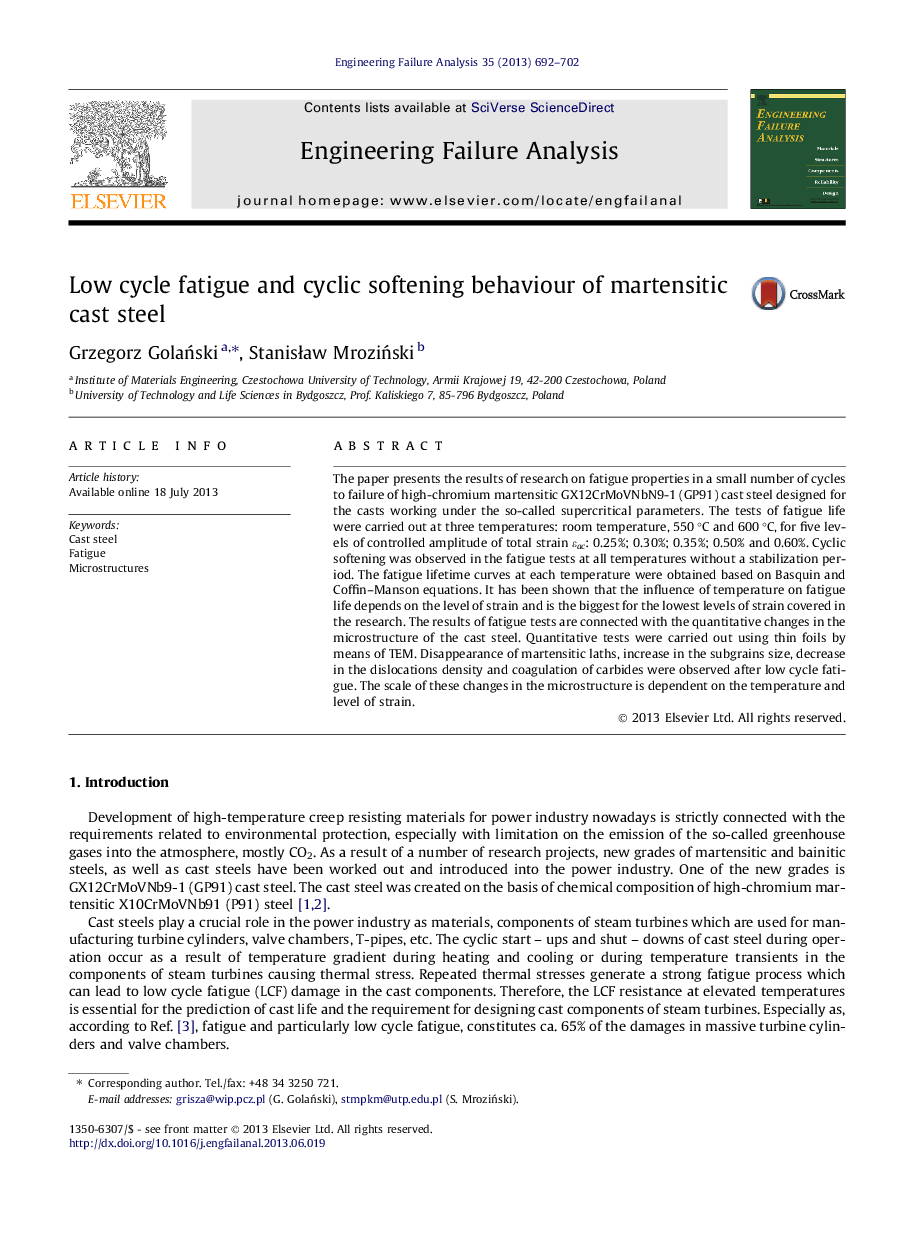| Article ID | Journal | Published Year | Pages | File Type |
|---|---|---|---|---|
| 774036 | Engineering Failure Analysis | 2013 | 11 Pages |
•The changes in microstructure after low cycle fatigue (LCF) have been examined.•LCF of the cast steel at three temperatures has been investigated.•Cycle softening of cast steel without the stabilization of loop parameters was observed.•Subgrain/carbide growth, dislocation density fall, laths morphology loss were shown.•The changes in microstructure depend on the temperature and level of strain.
The paper presents the results of research on fatigue properties in a small number of cycles to failure of high-chromium martensitic GX12CrMoVNbN9-1 (GP91) cast steel designed for the casts working under the so-called supercritical parameters. The tests of fatigue life were carried out at three temperatures: room temperature, 550 °C and 600 °C, for five levels of controlled amplitude of total strain ɛac: 0.25%; 0.30%; 0.35%; 0.50% and 0.60%. Cyclic softening was observed in the fatigue tests at all temperatures without a stabilization period. The fatigue lifetime curves at each temperature were obtained based on Basquin and Coffin–Manson equations. It has been shown that the influence of temperature on fatigue life depends on the level of strain and is the biggest for the lowest levels of strain covered in the research. The results of fatigue tests are connected with the quantitative changes in the microstructure of the cast steel. Quantitative tests were carried out using thin foils by means of TEM. Disappearance of martensitic laths, increase in the subgrains size, decrease in the dislocations density and coagulation of carbides were observed after low cycle fatigue. The scale of these changes in the microstructure is dependent on the temperature and level of strain.
